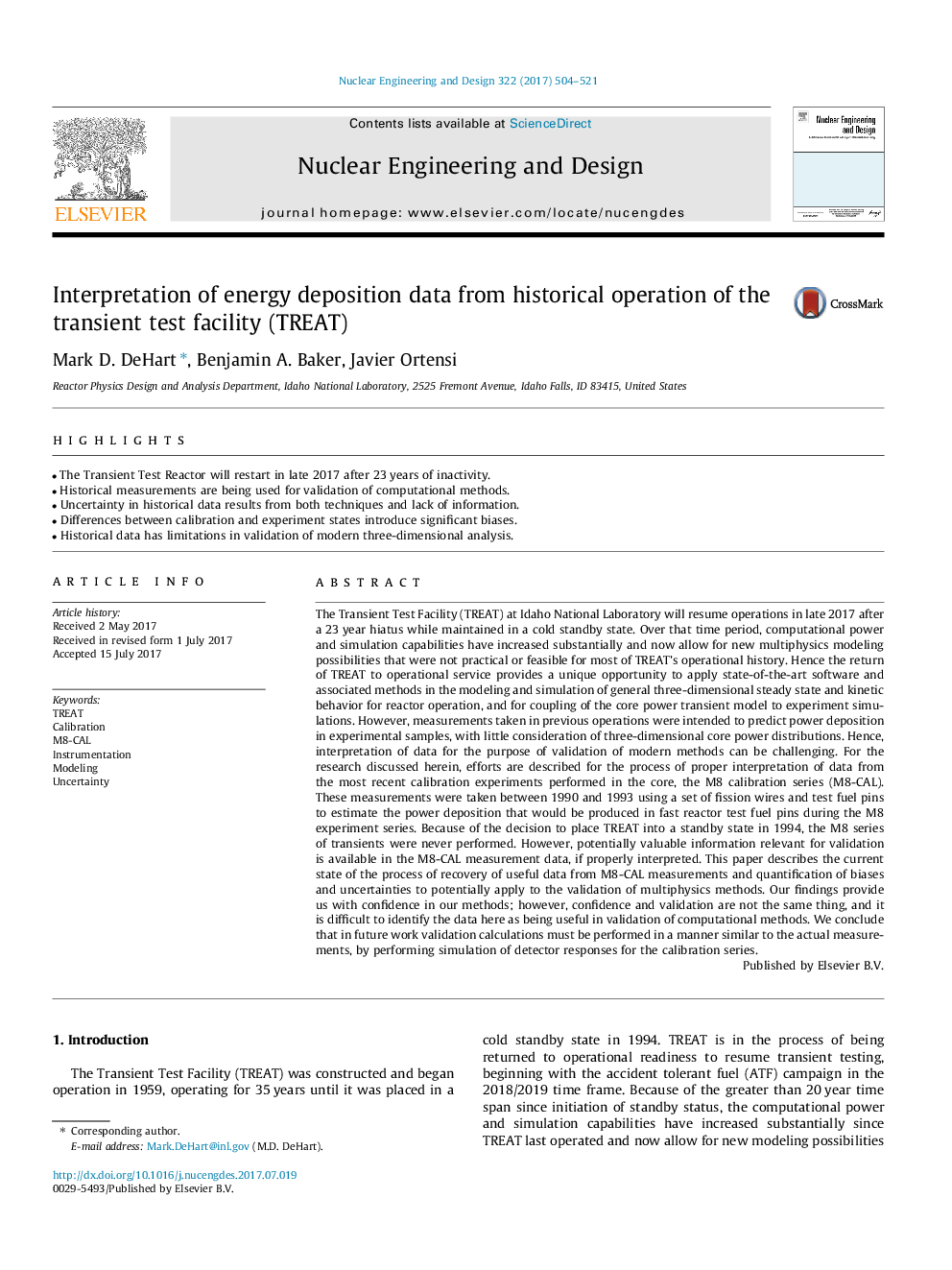| کد مقاله | کد نشریه | سال انتشار | مقاله انگلیسی | نسخه تمام متن |
|---|---|---|---|---|
| 4925301 | 1431399 | 2017 | 18 صفحه PDF | دانلود رایگان |
عنوان انگلیسی مقاله ISI
Interpretation of energy deposition data from historical operation of the transient test facility (TREAT)
دانلود مقاله + سفارش ترجمه
دانلود مقاله ISI انگلیسی
رایگان برای ایرانیان
کلمات کلیدی
موضوعات مرتبط
مهندسی و علوم پایه
مهندسی انرژی
مهندسی انرژی و فناوری های برق
پیش نمایش صفحه اول مقاله

چکیده انگلیسی
The Transient Test Facility (TREAT) at Idaho National Laboratory will resume operations in late 2017 after a 23Â year hiatus while maintained in a cold standby state. Over that time period, computational power and simulation capabilities have increased substantially and now allow for new multiphysics modeling possibilities that were not practical or feasible for most of TREAT's operational history. Hence the return of TREAT to operational service provides a unique opportunity to apply state-of-the-art software and associated methods in the modeling and simulation of general three-dimensional steady state and kinetic behavior for reactor operation, and for coupling of the core power transient model to experiment simulations. However, measurements taken in previous operations were intended to predict power deposition in experimental samples, with little consideration of three-dimensional core power distributions. Hence, interpretation of data for the purpose of validation of modern methods can be challenging. For the research discussed herein, efforts are described for the process of proper interpretation of data from the most recent calibration experiments performed in the core, the M8 calibration series (M8-CAL). These measurements were taken between 1990 and 1993 using a set of fission wires and test fuel pins to estimate the power deposition that would be produced in fast reactor test fuel pins during the M8 experiment series. Because of the decision to place TREAT into a standby state in 1994, the M8 series of transients were never performed. However, potentially valuable information relevant for validation is available in the M8-CAL measurement data, if properly interpreted. This paper describes the current state of the process of recovery of useful data from M8-CAL measurements and quantification of biases and uncertainties to potentially apply to the validation of multiphysics methods. Our findings provide us with confidence in our methods; however, confidence and validation are not the same thing, and it is difficult to identify the data here as being useful in validation of computational methods. We conclude that in future work validation calculations must be performed in a manner similar to the actual measurements, by performing simulation of detector responses for the calibration series.
ناشر
Database: Elsevier - ScienceDirect (ساینس دایرکت)
Journal: Nuclear Engineering and Design - Volume 322, October 2017, Pages 504-521
Journal: Nuclear Engineering and Design - Volume 322, October 2017, Pages 504-521
نویسندگان
Mark D. DeHart, Benjamin A. Baker, Javier Ortensi,